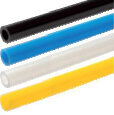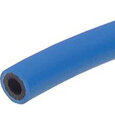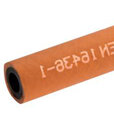Air & Gas Hoses - How They Work
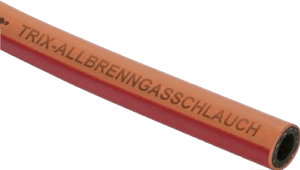
Figure 1: NBR hose suitable for air and gas
Air and gas hoses transport air and gas between different points, providing a reliable and efficient method of conveying these fluids over long distances. They are available in various materials, sizes, and designs to suit different applications and can offer flexibility, durability, and resistance to heat, chemicals, and abrasion. This article explores the materials used for their construction, their main features, and their applications.
Table of contents
- Air and gas hose types
- Media type
- Materials
- Hose requirements
- Applications
- Additional hose components
- Standards
- FAQs
View our online selection of Air & Gas Hoses!
Air and gas hose types
Air and gas hoses are differentiated by low and high pressure.
- Low-pressure hoses: Low-pressure hoses are designed for applications that require relatively low pressures, typically up to 300 PSI (20 bar). These hoses are often made of PVC (Poly Vinyl Chloride) or other lightweight materials and are flexible and easy to handle. Low-pressure hoses are used for gasses like acetylene, oxygen, butane/propane mix, natural gas, or neutral gas. They are commonly used in applications such as inflating tires, operating pneumatic tools, and supplying air to paint spray guns.
- High-pressure hoses: High-pressure hoses are designed to withstand higher pressures, typically up to several thousand PSI. These hoses are made of rubber, steel, or synthetic materials that are highly durable and resistant to abrasion and damage. High-pressure hoses are used in various applications, including hydraulic systems, gas transmission and distribution, and high-pressure pneumatic applications.
Media type
Knowing and understanding the media type is important when selecting the hose material and ensuring proper function.
Air hose
Air hoses should possess exceptional strength to withstand high pressure levels to prevent leakage and damage. To ensure the equipment operates smoothly, oil-based lubricants are occasionally introduced into the compressed air; hence, air hose materials should be resistant to oil.
Gas hose
The gasses transported in industrial facilities may be toxic and/or flammable. The gas hoses must be leak-proof and resistant to breaking. Failure to properly select the appropriate hose materials, pressure requirements, and fittings can be extremely hazardous in these facilities.
Materials
Various materials are available when selecting air and/or gas hoses suitable for an application.
Rubber hose
Rubber is a commonly used material for air and gas hoses as it is affordable compared to other materials. These hoses are known for their strength, flexibility, durability, and ability to withstand different levels of heat and temperature. Rubber compounds, such as EPDM (Ethylene Propylene Diene Monomer) and NBR (Nitrile Butadiene Rubber), are popular for air and gas hoses.
- EPDM rubber offers excellent resistance to heat, temperature, and ozone. However, rubber is unsuitable for applications requiring high purity as it cannot provide zero permeability. High-purity gasses are of better quality as they contain other gasses in considerably low proportion, and permeable materials may compromise the quality of such gasses by picking up contaminants.
- NBR is resistant to oil and chemicals. But, the material has a relatively lower resistance to heat and may not be suitable for applications that require high temperature resistance.
PVC hose
PVC is a widely used material for general-purpose air and gas hose applications. PVC hoses are inexpensive, durable, and lightweight. These hoses are a practical solution to use outdoors or at greater heights. However, they can curl or crack at colder temperatures.
PTFE hose
PTFE (Polytetrafluoroethylene) hoses are suitable for high-pressure industrial applications. They are durable, flexible, and economical. To achieve high purity in certain applications, PTFE can be subjected to a controlled temperature and pressure (a process known as 'post-sintering') to increase the number of molecular bonds, strengthen the hose, and thicken its walls. The outcome is a reduced likelihood of diffusion, which happens when gas molecules can escape through the hose's pores due to their small molecular weight.
All metal corrugated hoses
All metal corrugated hoses are generally used with gasses like hydrogen and helium that possess the risk of diffusion. These hoses have a metal corrugated inner core. They have zero permeability, so they are not exposed to gaseous diffusion. However, they are costly and much less flexible than other hoses.
Silicone hose
Silicone hoses are known for their flexibility and strength. They can operate in a wide temperature range, making them ideal for heating, cooling, and charged-air applications.
Table 1: Common gasses and their recommended hose materials
| Gas (Application) | Recommended hose material |
| Air | PVC, Rubber, Polyurethane |
| Natural gas | Stainless steel, PTFE |
| Propane | Rubber, Thermoplastic |
| Oxygen | PTFE, Stainless steel |
| Acetylene | Rubber, Thermoplastic |
| Nitrogen | PVC, Rubber, Polyurethane |
| Carbon dioxide | PVC, Rubber, Polyurethane |
Figure 2: Silicone hose
Hose requirements
Different hose materials exhibit unique properties, so it's essential to understand the material properties for the specific application and media.
Gas diffusion
Hose materials like rubber and PTFE are permeable to some degree, allowing gas molecules to enter or escape through the pores of the hose. This outward gas diffusion results in a pressure drop, leading to excessive energy consumption and poor system performance. In applications involving flammable gasses, gas diffusion can be particularly hazardous. In addition, other gasses may enter the hoses, leading to contamination. To eliminate the risk of gas diffusion, use an all-corrugated metal hose. Post-sintered PTFE hoses are an excellent alternative to metal hoses.
Chemical stability
Air and gas hoses must withstand the chemical properties of any gasses they are exposed to. Selecting the appropriate hose material directly from your application requirements is essential, as a hose material may work for certain media but not others.
Environmental stability
Hose materials like rubber and PVC are not resistant to environmental factors like UV rays and extreme weather. When selecting a hose for your application, it's important to consider the external environment. For applications prone to UV rays and extreme temperatures, better options include EPDM, silicone, ETFE, and PTFE.
Applications
Air and gas hoses are used in various industrial applications. Scuba divers use these hoses attached to the oxygen tank for breathing purposes. Labs and industries also use these hoses for carrying different types of gasses or for applications like welding. Some of the more common applications are discussed below:
Welding
Gas hoses are used for various welding applications like assembly, brazing, cutting, fabrication, pre-heating, post-heating, soldering, etc. Rubber hoses are generally used for their strength and flexibility. Gasses used for welding applications generally include acetylene, hydrogen, helium, natural gas, propane, propylene, oxygen, etc.
Breathing air
Air hoses are used in medical and recreational applications to provide breathing air. A standard rubber hose cannot be used for such application as toxic hydrocarbons may enter the respiratory system. Generally, a food-grade polymer is used to avoid such potential health hazards.

Figure 3: Breathing air hose
Medical applications
Medical air hoses are specialized for use in medical environments, typically in hospitals or clinics. These hoses supply clean, dry, and compressed air to medical devices, such as ventilators, anesthesia machines, and other respiratory support equipment. These hoses are typically made of non-toxic, medical-grade materials and are designed to resist kinking, crushing, and puncturing.
Additional hose components
In addition to the hose itself, several components can be added to improve its performance and functionality. These components can be added during manufacturing or retrofitted onto an existing hose as needed. The specifications, like the pressure of the hose, material type, and diameter of the hose, play an important role in selecting these additional components.
Hose reels
Hose reels protect the hoses. Modern hose reels are retractable and provide complete encasing to the hose. These hose reels also help eliminate loose uncoiled hoses on the shop floor and reduce the risk of accidental damage to the hose.
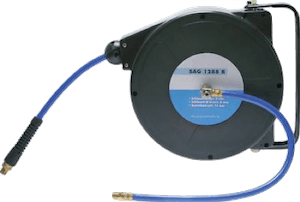
Figure 4: Automatic hose reel for compressed air
Pressure gauge
An air pressure gauge or gas pressure gauge allows the user to monitor the system's pressure. This is important to ensure the pressure doesn't exceed the application requirements or other product specifications.
Fittings for gas and air hoses
To operate smoothly and safely, the fittings used must be capable of withstanding the required pressure. Typically, fittings made from brass, type 304/316 stainless steel, or zinc-plated steel are utilized due to their strength and durability. Additionally, it is important to ensure that the material used for the fittings is resistant to the corrosive effects of the gas to prevent any potential hazards.
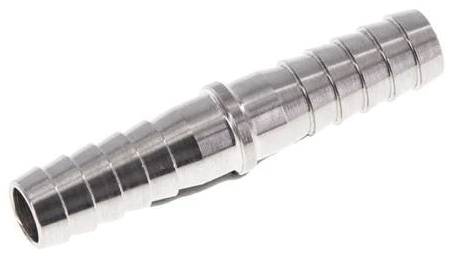
Figure 5: Hose connection fitting
Standards
Air and gas hoses are utilized for various purposes, including industrial and medical applications. To ensure safety and adherence to applicable domestic and international regulations, it is crucial to meet the relevant standards. Reviewing the local standards to ensure compliance with air and gas hoses for their intended use is essential.
- EN 1762:2018 : Requirement for rubber hoses and assemblies for use with liquefied petroleum gas (LPG) in a liquid or gaseous state and for natural gas transfer.
- ISO 2398:2016 : Specification for textile-reinforced rubber hose for compressed air.
- ISO 3821:2019 : Requirement for rubber hoses for welding, cutting, and braising processes.
- 29 CFR 1910.134 Compliance in OSHA : Emphasizes respiratory protection and lists the air hoses safe for breathing purposes approved by The National Institute for Occupational Safety and Health (NIOSH).
- EN 559: 2003 : Specification for rubber hoses for welding and cutting.
- EN 14593-1:2018 : Overview of breathing air hose standards
FAQs
What is a pneumatic air hose?
An air compressor hose is designed to transport compressed air from one point to another. They are used in various applications, from filling tires to supplying breathing air for medical/recreational purposes. They are typically made from Rubber, PVC, Silicone, EPDM, or Metal.
Can you use a natural gas hose for propane?
No, a natural gas hose cannot be used for propane because natural gas and propane have different chemical properties and require various hoses. Natural gas hoses are designed to withstand lower pressure than propane hoses and have different fitting sizes and shapes.
Can you use an air hose for the fuel line?
No, air hoses are not designed to handle the chemical properties of the fuel, and using them for fuel lines can result in leakage or damage to the hose.
What type of hose is used for propane?
Propane gas hoses are usually made of rubber, thermoplastic, or PVC (polyvinyl chloride) materials, specifically designed for use with propane gas. The hose must be rated for the pressure of the propane gas, typically 350 psi or higher.
What are the differences between rubber hoses and PVC hoses?
Rubber hose is more durable and can withstand high temperatures and pressure, while PVC hose is more affordable and suitable for lighter-duty applications. Rubber hose also has better chemical resistance, while PVC hose is more flexible and easier to handle.





